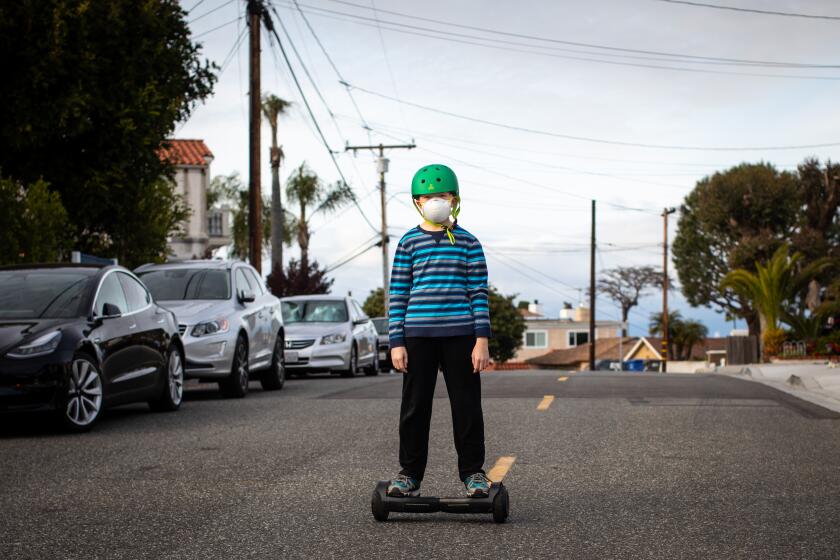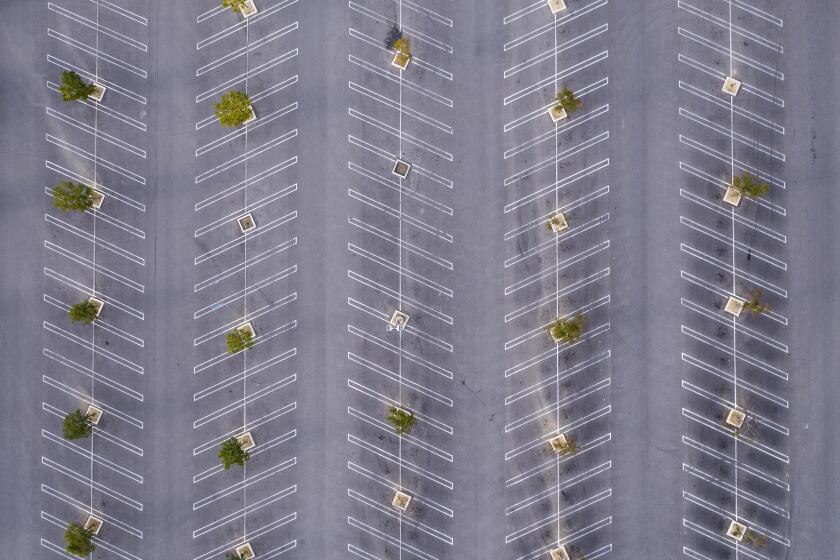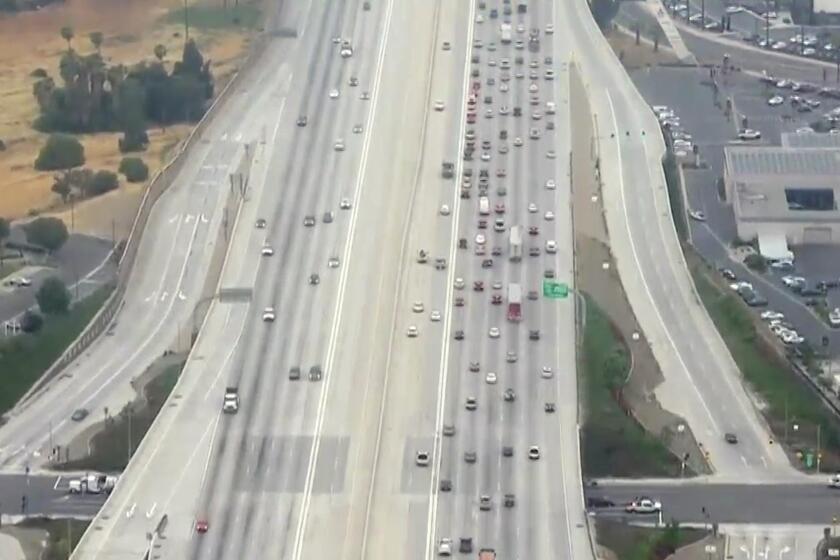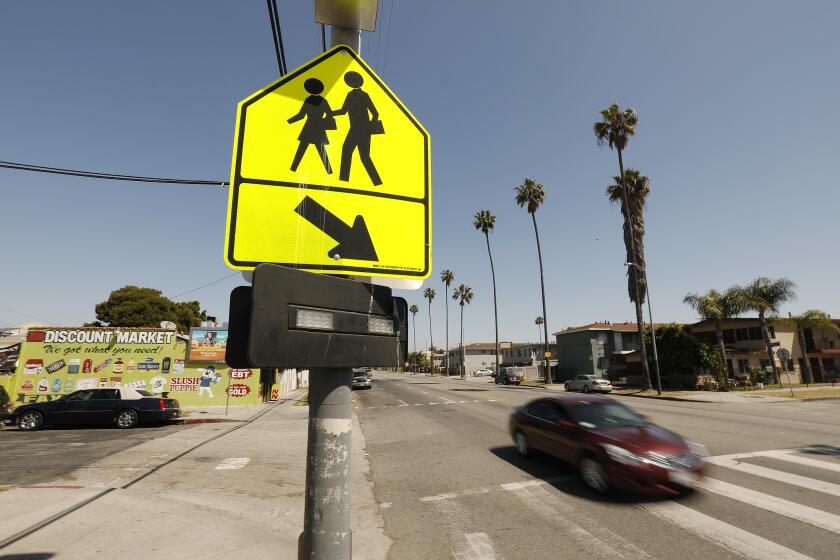Opinion: You aren’t imagining it, cyclists and pedestrians: L.A. traffic lights favor cars
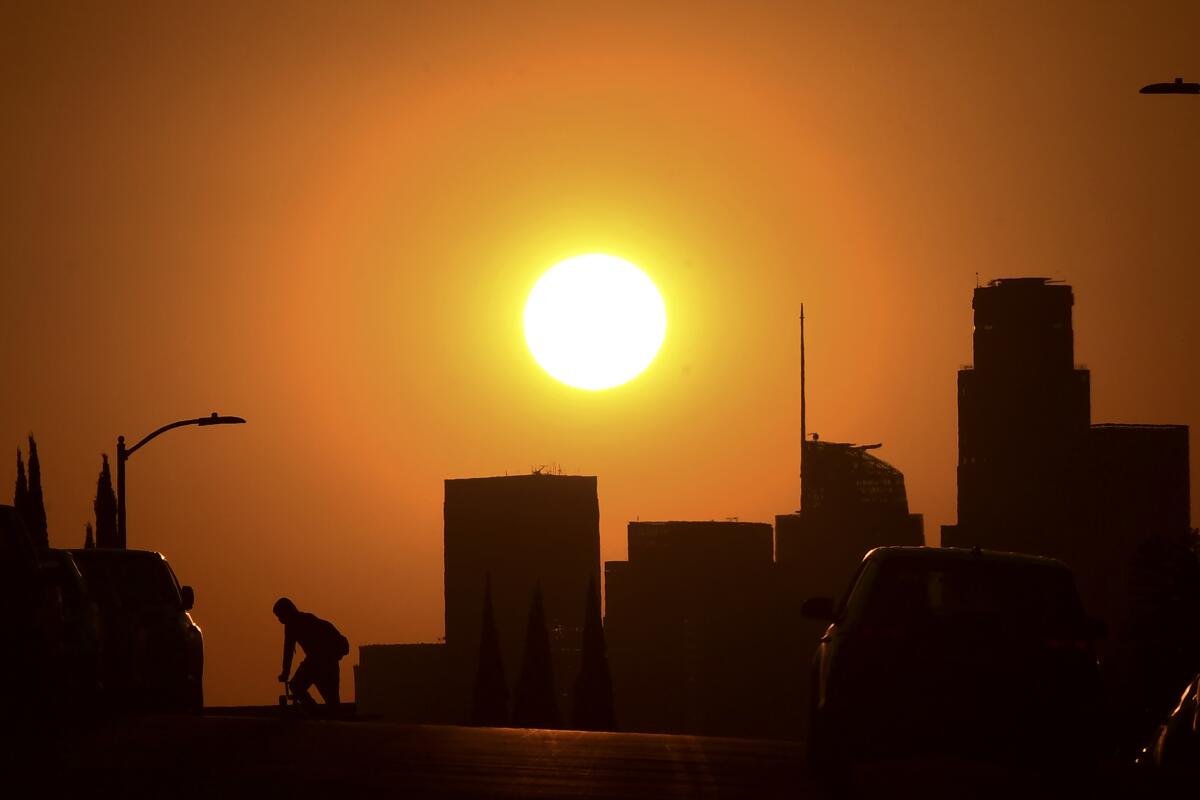
- Share via
In preparation for the 1984 Olympics, Los Angeles wanted to improve traffic flow and make moving around the city easier for athletes and visitors. To achieve that, the city developed the Automated Traffic Surveillance and Control System, or ATSAC for short. The goal? Move traffic more “dynamically” by synchronizing signals and changing signal timing based on traffic patterns, so drivers had a more predictable, smoother experience.
Back in the 1980s, Los Angeles, the state of California and the entire country used a concept called “level of service” to judge transportation projects. If someone wanted to build a new apartment building, or if the city was considering a new crosswalk, the impact to the level of service to drivers was measured. The goal was to have an “A” level of service, which meant free-flowing traffic, without bottlenecks or gridlock. Projects that would have slowed traffic — even if they might encourage someone to travel outside of a car — were often killed in the name of driver convenience.
Vehicle sizes have ballooned in recent decades, and now children would be unsafe on bikes. History shows us a better approach.
There was a tradeoff to “level of service” thinking: Because car movement was so prioritized, movement for everyone else was deprioritized. Pedestrians were made to wait a long time to cross a street if they happened to arrive just after the light changed. Cyclists had virtually no dedicated infrastructure, because a dedicated bike lane might slow drivers down or reduce lanes or parking available to drivers. And transit riders often found their buses sharing lanes with people driving private vehicles, even though a dedicated bus lane would be much more efficient.
Today, ATSAC — the largest system of its kind in the country — largely remains the same as it was back in the 1980s. While we’ve added more detector loops and cameras to measure vehicle traffic, the goal largely remains the same: move as many cars as quickly as possible.
Synchronized traffic signals, while sounding appealing to drivers, aren’t always in their best interest. When drivers see a bunch of green lights in a row on streets built like highways (most major streets in the city of Los Angeles), they often speed down them, sometimes with deadly results. Speeding, in fact, has gotten worse since the COVID pandemic.
Too many new buildings have too many parking places, by law. The city should reduce the amount of land devoted to cars, so more housing can be built.
Our city has evolved significantly since the early 1980s. We now have a quickly growing Metro rail system, an expanding network of bus-only lanes and a small but growing network of bike lanes. In short, we’ve moved from a car-dominated city to a more multimodal city.
The traffic lights just haven’t kept up. The city should align ATSAC with our larger goals of helping people use cars less, especially for shorter trips, and to get to and from Metro stations without using a car at all (called “first/last mile”). More people would walk more places if signals responded quickly when they pushed a button to cross the street. Angelenos would be more likely to use a bike to get around if we had a network of safe bike lanes that included sensors and responsive signals (such as what Santa Monica has implemented). More people would use the bus if it had priority at intersections and got to its destination faster than private vehicles; a case in point is the G (Orange) Line in the San Fernando Valley, where the bus runs on a dedicated right-of-way but often stops at red lights so cars can cross.
It just makes sense for our traffic light system to prioritize pedestrians and cyclists over motorists. Half the year, it’s blazing hot in Los Angeles, yet our traffic light system favors those who are comfortably resting in metal boxes with air conditioning. The other half of the year, it’s colder (and, if this past winter is any indication, often raining), and yet traffic signals still err on the side of motorists rather than the travelers who are exposed to the elements.
The expansion of highways will do far more harm than the expansion of mass transit will avert.
In a rethought approach to traffic signals, we should have more intersections with scramble crosswalks, where pedestrians can cross freely in all directions at once, while cars are completely stopped. We need more intersections with dedicated bike boxes (and bike signals) that prioritize those walking and cycling (such as the one on Rosewood at La Brea).
Across the city, we need to change our signals to be free running, meaning they react quickly to demand or change on a schedule instead of trying to synchronize and give drivers a long runway to speed. We used schedules early in the pandemic at nearly all signals, so people didn’t have to touch pedestrian crossing buttons — so this isn’t a difficult change to imagine or institute.
Legislation in Sacramento would allow pilot programs in six cities to issue automated tickets. It’s not a moneymaking scheme; it’s about making streets safe.
If Los Angeles is serious about its residents walking, biking and using transit more, then it needs to get serious about prioritizing these alternative modes of transportation. This is especially true for shorter trips — and 50% of outings that Americans (including Angelenos) make each day are three miles or less. We need intersections that reward residents for not using a car. While optimizing vehicle traffic flow is important, optimizing our traffic light system for the flow of people is more important.
Michael Schneider is the founder of Streets for All.
More to Read
A cure for the common opinion
Get thought-provoking perspectives with our weekly newsletter.
You may occasionally receive promotional content from the Los Angeles Times.
